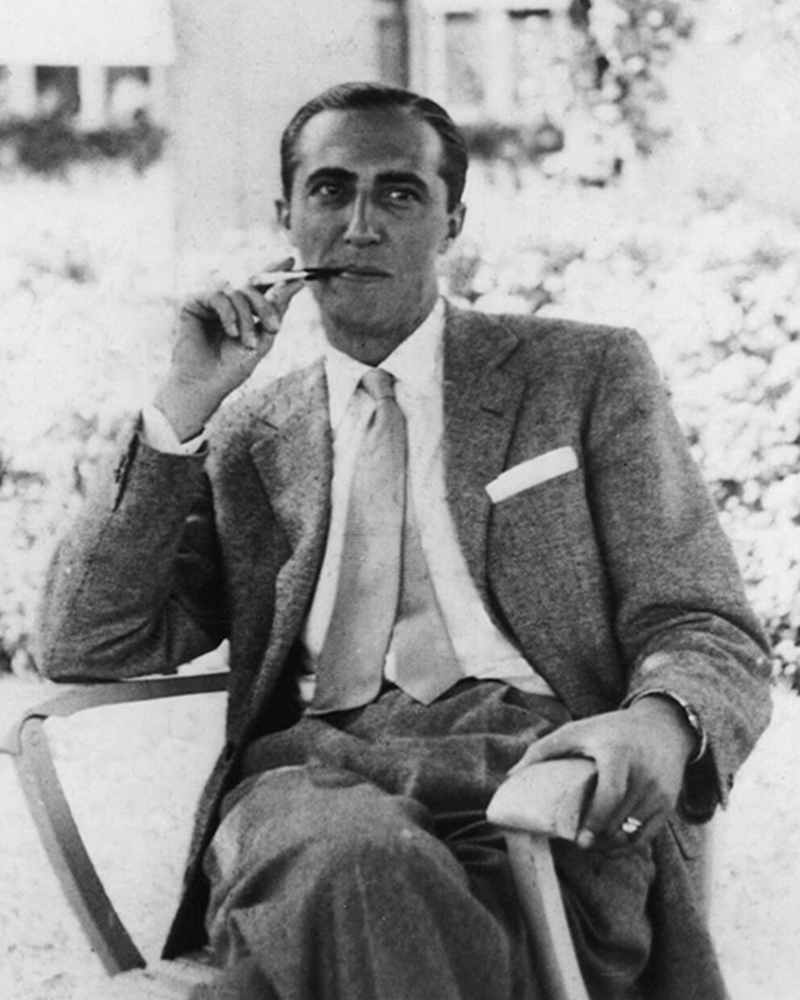Side Gallery
Side Gallery
WishlistFollow
Follow

Gino Sarfatti (September 16, 1912, Venice, Italy – March 6, 1985, Griante, Como, Italy) was an Italian who became known for his talent as a lighting designer. He was the founder of the light manufacturing company Arteluce.
He was born into a family of relative wealth, his father, Riccardo Sarfatti, was a prosperous Jewish food trader, and his mother, Lucia Zuccoli, was from a prominent Catholic family of Trieste. In 1930, Gino moved to Genova to enroll in the Faculty of Aeronaval Engineering.
In 1935, the League of Nations placed a sea embargo on Italy as a reaction to Mussolini’s government, and the Sarfatti family’s economic situation worsened considerably. At 23, Gino Sarfatti left his studies and moved to Milan, where he founded the lighting company Lumen in 1936 in partnership with Aldo Valcarenghi and Dino Mondolfi. Three years later, Sarfatti decided to part ways with his partners and founded the light manufacturing company Arteluce in February 1939.
To support his vision to modernize lighting design, Gino Sarfatti quickly opened Arteluce’s first store in Milan at the centric, and trendy Corso Littorio 12 location (now Corso Matteotti), and, in 1940, Arteluce participated in the VII Triennale di Milano. During this time, Arteluce also became a frequent meeting place for many leading Italian mid-century designers, including Franco Albini, Gianfranco Frattini, Ico Parisi, and Vittorio Vigano. However, the situation in Italy was also changing. In 1943, Gino Sarfatti was forced by the racial laws of the Fascist government to leave Milan and fled with his family to Switzerland, leaving his bookkeeper and secretary, Pinuccia Azzaroni Bassani, to manage the day-to-day activities of Arteluce. Gino Sarfatti and his family returned to Milan in 1946, immediately after the Liberation.
In 1950, Gino Sarfatti embarked on a transformative research journey to the United States. During his creative leave, he handed the role of artistic director to Vittoriano Vigano, who contributed his own design imprint to the brand by using metal cones and shapes to shed and project light along large arms, a feature of significance to Arteluce’s future aesthetic. In 1951, nine Arteluce models participated in the IX Triennale di Milano, and in 1952 Franco Albini included 12 Arteluce lights at the Paris exhibition of Italian Decorative Arts. In 1953, Gino Sarfatti decided that, after 14 years, his store needed a new look; thus he chose Marco Zanuso to orchestrate the reformation.
In 1954 and 1955, Sarfatti received numerous international awards, including two Compasso d’Oro awards for his lamp designs for models 559 and 1055. In 1958, he designed the renowned Pendant lamp for Arteluce. In 1962, Sarfatti decided to open a larger shop on Via della Spiga in Milan, but this time designed by Vittorio Vigano.
During the 1960s, Arteluce’s business multiplied with its home lighting designs sold in Italy and internationally and with its custom Gino Sarfatti lighting designs for public buildings. As other important Italian designers, such as Nino Zoncada, Gustavo Pulitzer-Finale, Paolo de Poli, Pietro Chiesa, and Gio Ponti, during this time, Gino Sarfatti, through Arteluce, became involved in many interior and furniture design projects for the rapidly growing industry of Italian ocean liners.
By the late 1960s, the density of Arteluce’s business had grown substantially and needed a much larger managerial team. His sons and daughter-in-law joined the company, but Gino Sarfatti decided to sell Arteluce to FLOS in 1973 at the peak of its sales and profits.
Gino Sarfatti retired to live in Lake Como with Angela Regiroli and their daughter Micol, where he preserved a private life away from the design community.
ENQUIRE ABOUT THE DESIGNER